Art Fairs
What Gives an Art Fair Staying Power? Turin’s Artissima Remains a Haven for Old-School Collectors After a Quarter-Century
The fair isn’t looking to expand into a brand. It just wants you to see (and buy) good art.
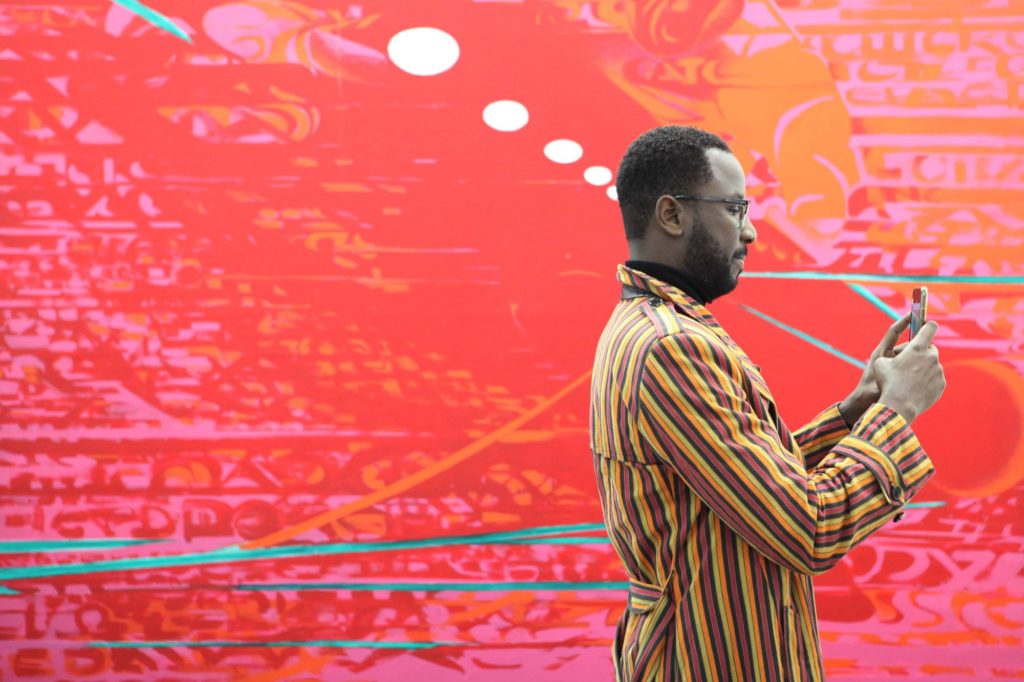
The fair isn’t looking to expand into a brand. It just wants you to see (and buy) good art.

Javier Pes

There’s a huge soccer match in Turin on Saturday, the Italian city where art, like soccer, is a deeply serious business. “Half my team are Torino but we have to cheer Juventus at the fair,” says Ilaria Bonacossa, the director of Artissima. Juve is sponsoring the fair’s child-friendly junior section for the second time. The manager of Juve’s women’s team turned out yesterday, October 31, as the fair kicked off its 2019 edition. So, the bias is understandable.
Now in its 26th edition, Artissima stands out in a crowded field of European art fairs held every fall because it is committed to serious art for serious collectors. It isn’t looking to expand internationally, nor is it particularly interested in converting art novices into first-time buyers. Artissima is comfortable existing for the already converted. As one French collector who preferred to remain unnamed put it: “It’s not branded—it’s different.”
And indeed, throughout the aisles, brand names give way to lesser-known galleries from Tehran, Beirut, and Tel Aviv. Sculpture doesn’t get more serious than Yael Bartana’s haunting new “fossilised” automatic weapons, R.I.P. AK47 and R.I.P. UZI, on the booth of Sommer Contemporary Art of Tel Aviv and Zurich, which were instant talking points.
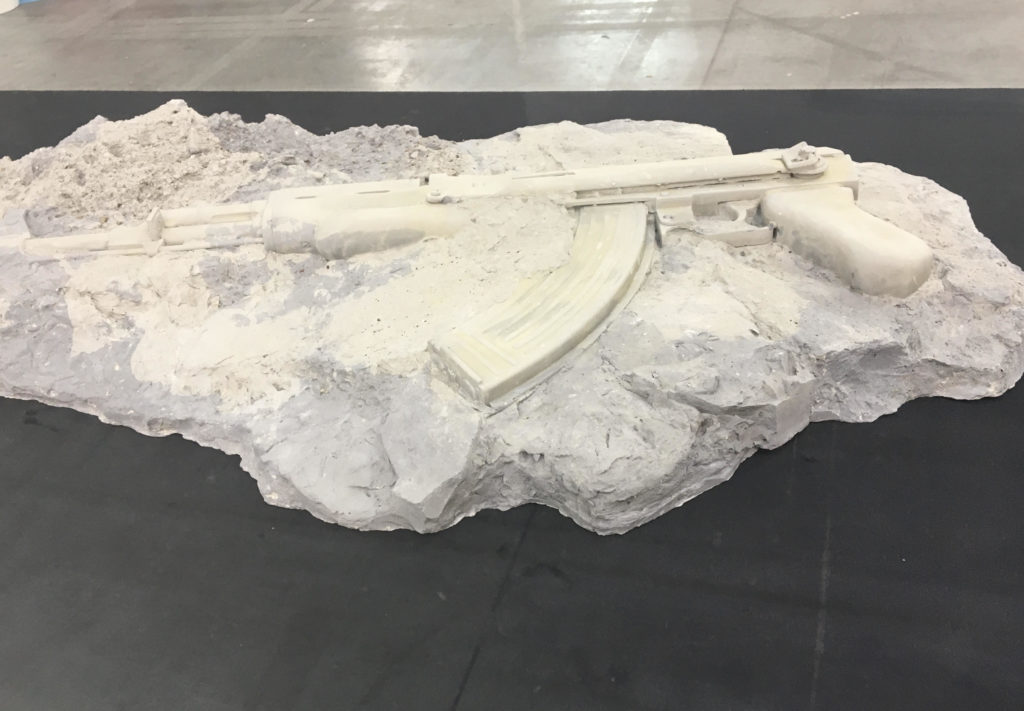
Yael Bartana R.I.P. AK47 (2019) at Sommer Contemporary Art. Photo by J. Pes.
“There is a tradition of Italian collectors being quite brave,” says Bonacossa, the former curator of Turin-based super-collector Patrizia Sandretto Re Rebaudengo’s foundation, who now juggles Artissima with directing the Fondazione La Raia near Genoa. “International collectors come because they find strong new things, not the same power 100.”
That view was also endorsed by the Belgian collector and art-fair aficionado Alain Servais, who tweeted that Artissima is a healthy contrast to other fairs that can feel like “shopping malls” full of branded products. His early purchases included an interactive sculpture comprised of a set of rolling pins made of various animal skins by the Brazilian collective OPAVIVARÁ at A Gentil Carioca gallery of Rio de Janeiro.
Museum leaders were also in ample supply. Fifty curators and museum directors had signed on to attend, a remarkable number given the size of the fair. Among those that made purchases was the Castello di Rivoli museum, which bought the VR installation Real Violence (2017) by the American artist Jordan Wolfson for an undisclosed sum from Sadie Coles. The work is, virtually speaking, the hardest-hitting at Artissima: Don the goggles and earphones and you will witness a man beating a defenseless victim in what seems like an unprovoked street attack. The more than two-minute-long bloodbath is accompanied by a Hebrew prayer and brutal sound effects. (Full disclosure: the first whack of the baseball bat was enough for me.) The director of Castello di Rivoli, Carolyn Christov-Bakargiev says: “It is the first VR work that embodies the violence in the medium.”
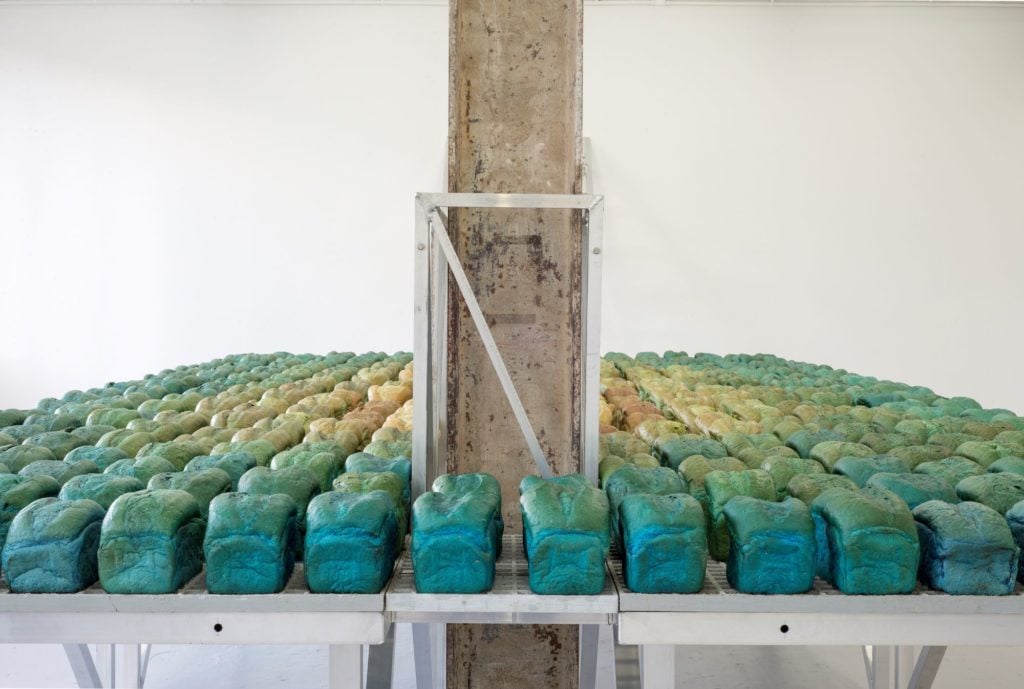
Augustus Serapinas Blue Pen (2018-19). Courtesy of Emalin and David Dale Gallery.
Part of the benefit of Artissima is that participation “is not expensive for galleries,” Bonacossa says. “So [they] can take risks with a young artist.” Proof of the pudding is the way the London-based gallery Emalin and Apalazzo of Brescia quickly sold a show-stopping installation of bread loaves by Augustas Serapinas, the youngest participant in the main exhibition of the 2019 Venice Biennale. Called Blue Pen (2018), the ingeniously engineered sculpture was first shown at the 2018 Glasgow International. The Italian designer Luca Bombassei bought it for €35,000 ($39,000) and plans to show it at his forthcoming exhibition space in Perugia.
Meanwhile, another well-trafficked portion of the fair was its much-imitated section “Back to the Future,” which features works made from the 1960s to 2000 with a focus on overlooked artists. Standout projects this year include the American-born, Britain-based Liliane Lijn’s video and bronze sculptures at Rodeo of London and Athens; veteran Japanese artist Kimiyo Mishima’s collages from the late 1960s at Sokyo Gallery Kyoto; an ephemeral sculpture made of pillars of salt by the radical architecture collective Superstudio presented by Pinksummer of Genoa; and the German-based, Hungarian artist Endre Tót’s redacted-text paintings of the late 1980s at ACB of Budapest.
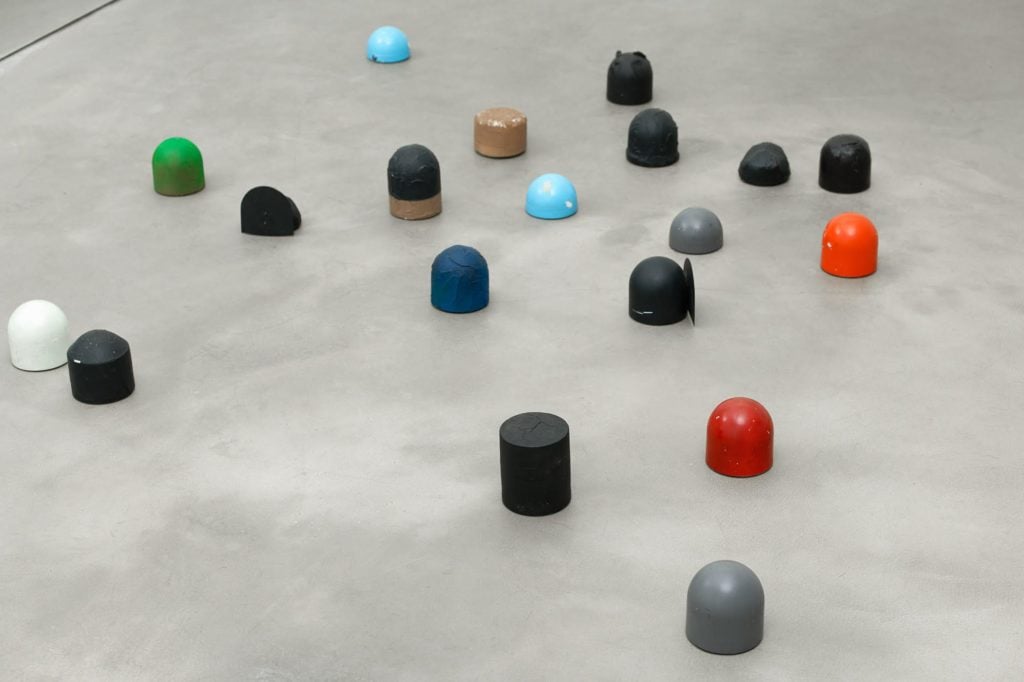
Robert Breer Variation(1970). Photo: by Aurélien Mole, Courtesy gb agency, Paris.
For collectors and curator unfamiliar with the US artist Robert Breer (1926-2011) gb agency’s booth is a memorable introduction. Early sales of historic pieces from “Back to the Future” included 21 of the artist’s colorful mechanical “creepers.” Made in 1970, the mesmerizing miniature kinetic pieces were snapped up by an Italian foundation within hours of the fair’s opening. The artist’s works in the presentation—which artist Ryan Gander called “a genius stand”—included experimental film, drawings, and animation sketches priced from €10,000 to €100,000 ($11,000 to $111,000). The gallery’s Marisol Rodríguez says she keeps coming back to Artissima because there are “serious collectors here, who are very educated about different artists, and different epochs.”
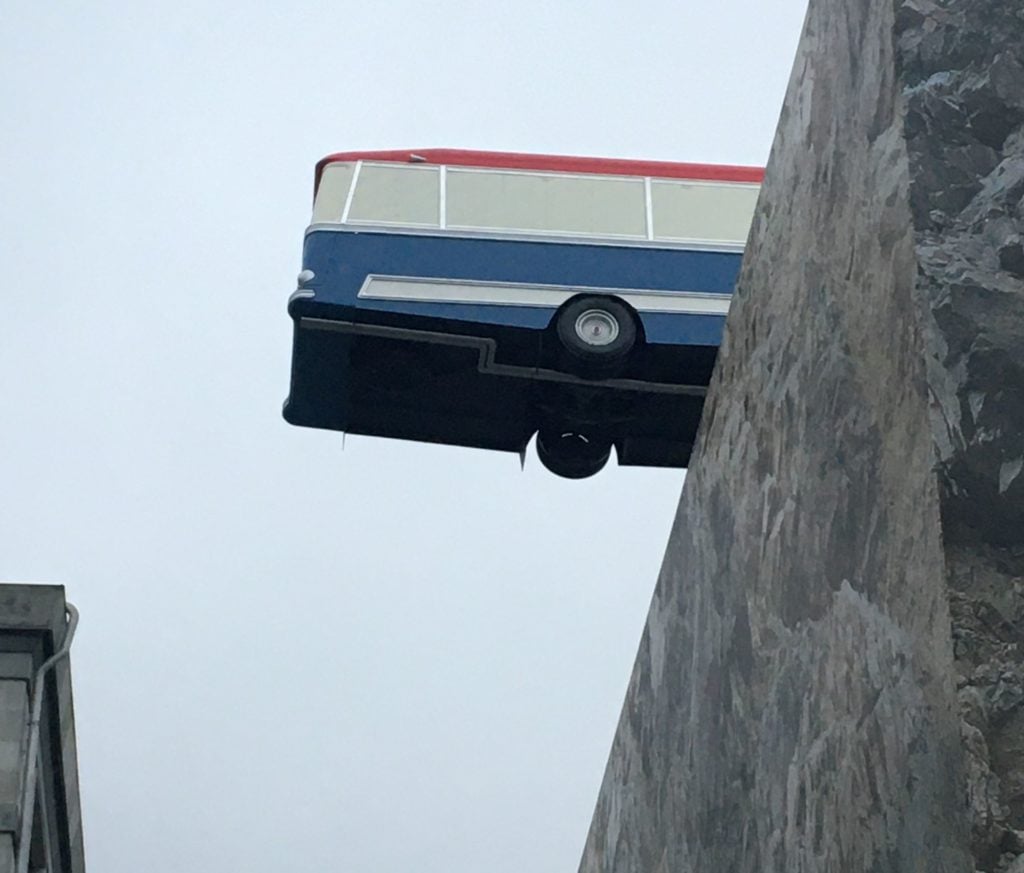
Richard WilsonHang On A Minute Lads… I’ve Got an Idea, installed in Turin, 2019, for Artissima. Photo by J.Pes.
There is much to see outside the confines of the fair, too. Two of Artissima’s off-site projects stand out: the exhibition “Abstract Sex” held at Jana, a famed Turin fashion boutique, which includes thought provoking works by the likes of Candice Breitz (KOW gallery), Simon Fujiwara (DVIR), plus Barbara Hammer’s 1976 film Multiple Orgasm from the artist’s estate (KOW and Corrado Levi). Elsewhere in Turin its long art weekend started early with British sculptor Richard Wilson’s spectacular sculpture of a full-sized bus teetering on the edge of a tall building. Inspired by the famous cliff-hanging ending of the 1969 heist movie, The Italian Job, which was filmed in Turin, the precarious sculpture was unveiled on Wednesday, the day Britain was due to leave the European Union (but didn’t). Politics, like art and soccer, is an unpredictable and precarious business.